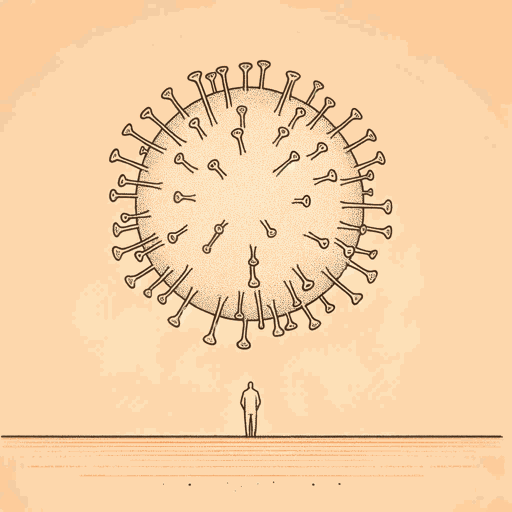82 pages • 2 hours read
David QuammenSpillover: Animal Infections and the Next Human Pandemic
Nonfiction | Book | Adult | Published in 2012A modern alternative to SparkNotes and CliffsNotes, SuperSummary offers high-quality Study Guides with detailed chapter summaries and analysis of major themes, characters, and more.
Summary and Study Guide
Overview
Spillover: Animal Infections and the Next Human Pandemic is a 2012 narrative nonfiction work about the relationship between animal infections and human disease. It was nominated for several awards and won the Science and Society Book Award, given by the National Association of Science Writers, and the Society of Biology (UK) Book Award in General Biology.
In Spillover, Quammen’s narrative alternates between the outbreak and eventual discovery of recent emerging diseases, and the scientific discoveries of the past that made such advancements possible. Quammen’s main subject is zoonotic disease: diseases that humans acquire from animals. He routinely intersperses these health mysteries with accounts of his own travels and personal meetings with experts so that he can meet zoonotic diseases in their environments, with the lurking threat that one will cause a pandemic.
Quammen opens his narrative with a mysterious virus, Hendra, that sickened horses and a few people in Australia in 1994. Hendra virus lives routinely in its “reservoir host” of bats, but when it enters horses, the virus multiplies easily and can spread to people. Many of Quammen’s protagonists are scientists, virologists, or veterinarians with a background in infectious disease and public health, and his Hendra narrative includes a scientist who identified the reservoir so that outbreaks could be understood, if not contained.
Ebola takes Quammen to Africa, where he meets both naturalists and doctors. Ebola routinely sickens primates, and exposure to primates is what tends to infect humans. Ebola’s source turns out to be far more elusive than Hendra’s, as its outbreaks are relatively brief and often occur in remote villages. Years of patient research eventually suggest that the virus routinely lives in bats, although not conclusively. Quammen also highlights the dangers of infectious disease work in his discussion of Ebola.
Quammen uses his study of malaria to examine the history of health threats and scientific responses to them. Since the early 20th century, scientific pioneers have pushed for ecological and mathematical understandings of disease: specifically, the dynamics within a population that explain how outbreaks begin and end, and the possibility of disease transmission. Quammen consults with many experts to understand and explain the nature of viral mutation and how viruses exploit their hosts.
The 2003 outbreak of SARS was particularly terrifying at the time as it was not only unidentified but also spread rapidly and quickly became a global phenomenon as infected people traveled before showing symptoms. SARS turned out to be infecting the food supply via the popularity of consuming wild animals and was contained thanks to rapid public health response measures, but also via luck: the disease is not highly contagious until people develop symptoms.
Quammen next turns to zoonotic diseases caused by viruses: psittacosis, which infected people at the turn of the last century via their parrots; Q fever, which infected several of those who studied it; and Lyme disease, which serves to demonstrate that humans are intimately connected with animals and tend to misunderstand what causes outbreaks. Another virus, Nipah, illustrates how viruses readily exploit local variations in human behavior.
Quammen then turns to the last “Big One,” HIV-AIDS, to emphasize that zoonotic diseases do not always stay rare and isolated. He unpacks early efforts to determine HIV’s viral nature and its mechanisms of attacking the immune system. HIV has many commonalities with other diseases Quammen studies: It depends on the interdisciplinary work of experts to understand it, and it reveals the role of human-animal interactions in.
To conclude both his narrative and his argument, Quammen briefly considers influenza and its ripe potential status as the Next Big One. Outbreaks, Quammen reminds us, are a product of humanity’s animal status and disproportionate ecological role: We are a thriving species continually entering and disrupting animal habitats. As long as this is the case, we will depend on scientists to make us aware of potential threats to our health; we depend on our intelligence to spare us from disaster.

